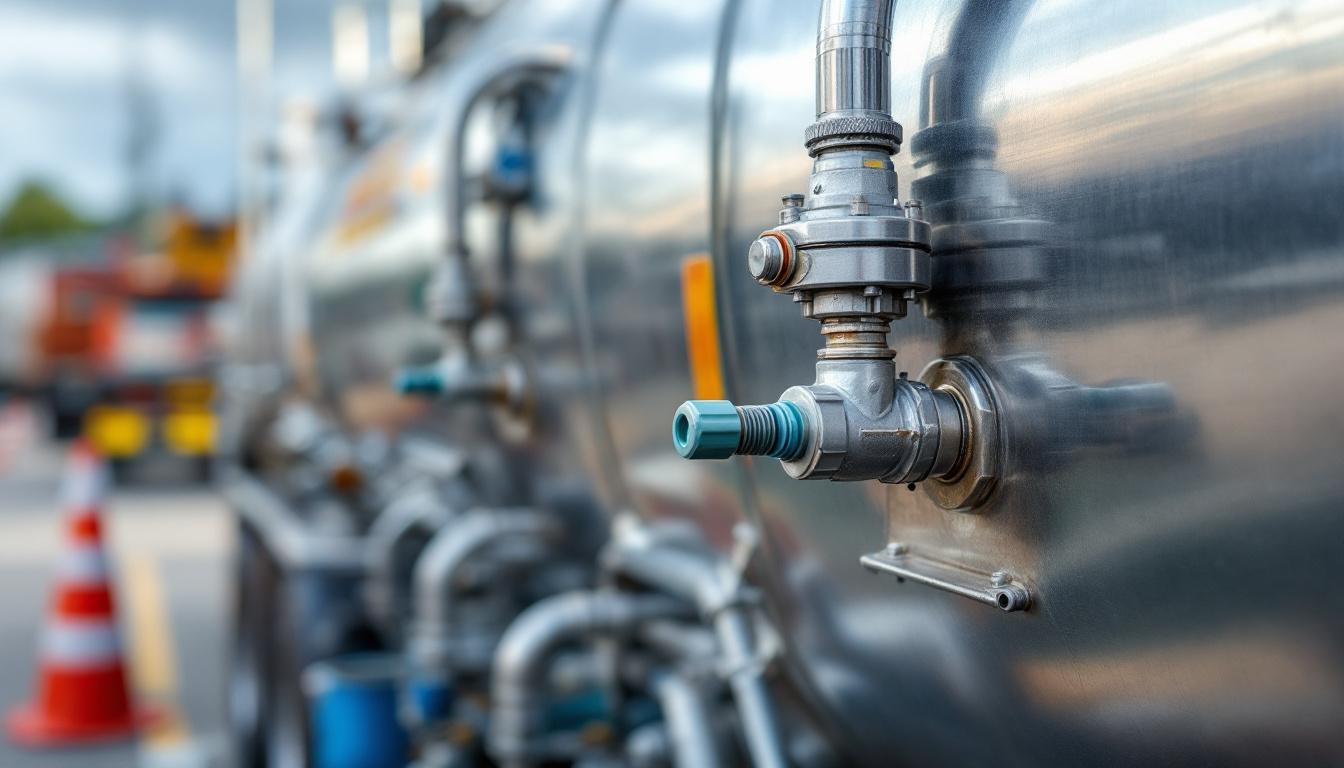
Liquid Bulk Chemical Transportation: Best Practices
At GLOBAL TERMINAL NETHERLANDS B.V, we understand the critical importance of safe and efficient liquid bulk chemical transportation. This industry demands meticulous attention to detail and adherence to strict protocols.
In this blog post, we’ll explore the best practices that ensure the secure handling of hazardous materials throughout the transportation process. From safety protocols to regulatory compliance, we’ll cover essential aspects that every professional in this field should know.
Mastering Safety in Liquid Bulk Chemical Transport
Safety stands at the forefront of liquid bulk chemical transportation. The industry demands meticulous attention to detail and strict adherence to safety protocols. Let’s explore the critical aspects of secure handling of hazardous materials throughout the transportation process.
Essential Personal Protective Equipment
Personal Protective Equipment (PPE) forms the first line of defense in chemical transportation. The purpose of chemical protective clothing and equipment is to shield or isolate individuals from chemical, physical, and biological hazards. Staff training on correct use and maintenance of PPE is essential. Regular inspections and replacements of worn equipment can prevent potential incidents.
Rapid Emergency Response
Quick and effective emergency response can transform a potential catastrophe into a manageable incident. A comprehensive emergency response plan should include immediate spill containment procedures, evacuation protocols, and communication with local authorities. This chapter provides suggestions on how to have an effective plan for chemical emergencies.
Meticulous Handling and Storage
Proper handling and storage techniques prevent accidents. The use of compatible materials for storage containers and transfer equipment is paramount. A rigorous inspection schedule for all equipment (including valves, pumps, and hoses) can prevent leaks and spills. Precise temperature and pressure controls during storage and transport are critical for reactive chemicals.
Continuous Training and Education
Ongoing education and training form the backbone of a robust safety culture. Regular workshops, simulations, and refresher courses keep staff updated on the latest safety protocols and industry best practices.
Leveraging Technology for Safety
Modern technology plays a vital role in enhancing safety measures. Real-time monitoring systems, IoT sensors, and advanced analytics help predict and prevent potential hazards. These technologies can improve overall operational efficiency.
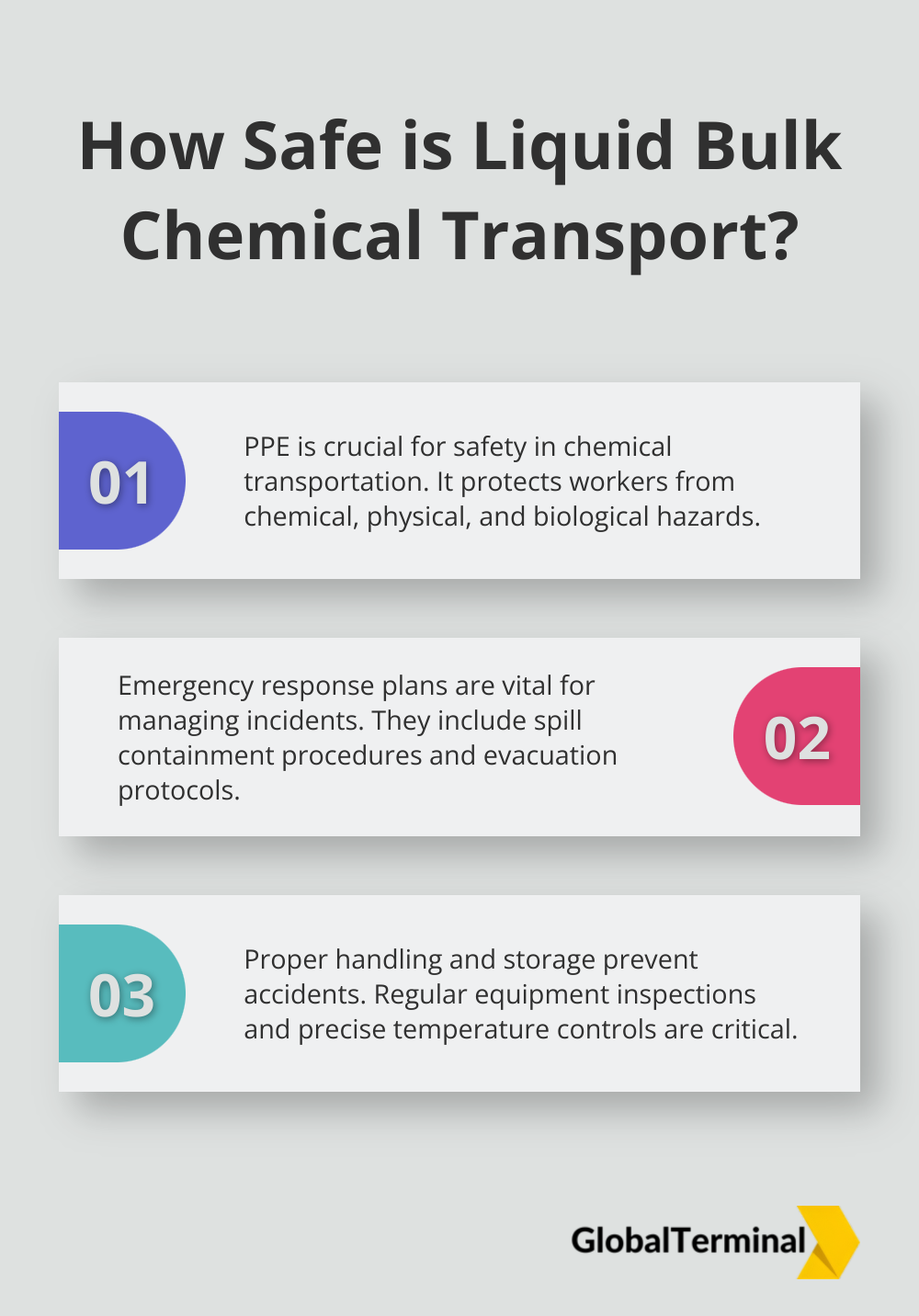
As we move forward to discuss efficient loading and unloading processes, it’s important to note that safety remains a top priority throughout all stages of liquid bulk chemical transportation.
Streamlining Loading and Unloading Processes
Efficient loading and unloading processes form the backbone of liquid bulk chemical transportation. These operations require precision, speed, and unwavering attention to safety. Let’s explore the best practices that maximize efficiency without compromising safety.
Rigorous Pre-Loading Inspections
Before any loading begins, thorough inspections are essential. Teams must meticulously check all equipment, including valves, pumps, and hoses, for signs of wear or damage. Thermoreflectance Thermal Imaging (TTI) is a two-dimensional microscopic technique for reflective surface inspection, providing a surface thermal analysis. This proactive approach significantly reduces incident rates and enhances overall safety.
Optimizing Loading Sequences
The order in which chemicals are loaded impacts both efficiency and safety. Sophisticated software can calculate the optimal loading sequence based on chemical properties, tank design, and destination. Such systems can cut average loading times, translating to substantial time and cost savings for clients.
Unloading with Precision and Speed
Unloading presents its own set of challenges. A two-person verification system for all valve operations during unloading can virtually eliminate accidental releases. Custom-designed quick-connect systems allow for rapid hose attachments, potentially reducing connection times. Drylok™ coupling systems are designed to safely transfer hazardous, corrosive, volatile liquids such as acids, solvents and petrochemicals.
Leveraging Technology for Enhanced Efficiency
Modern technology plays a pivotal role in streamlining loading and unloading processes. Real-time monitoring systems and IoT sensors provide valuable data that can optimize operations. These technologies (when implemented correctly) not only improve efficiency but also enhance safety measures.
Training and Continuous Improvement
Regular training sessions and workshops ensure that all personnel stay updated on the latest best practices and safety protocols. Continuous improvement initiatives, based on data analysis and feedback, help refine processes over time.
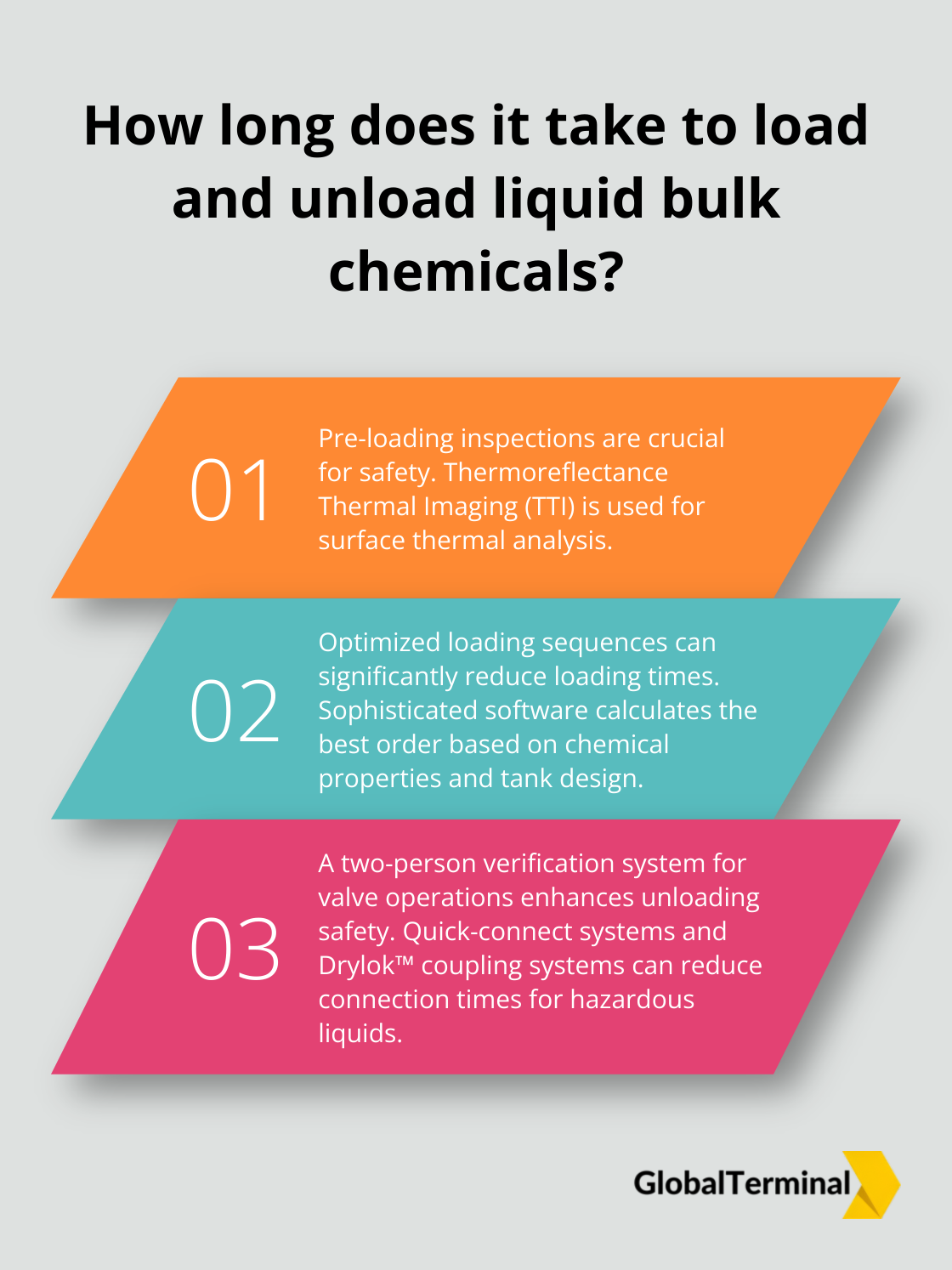
Efficiency in loading and unloading isn’t just about speed-it’s about precision, safety, and reliability. These practices set the foundation for safe and efficient liquid bulk chemical transportation. However, to truly excel in this field, companies must also adhere to strict regulations and industry standards. Let’s explore how compliance further enhances the safety and efficiency of liquid bulk chemical transportation in the next section.
Navigating the Regulatory Maze in Liquid Bulk Chemical Transportation
Decoding the IMDG Code
The International Maritime Dangerous Goods (IMDG) Code establishes the standard for sea transport of hazardous materials. This comprehensive set of rules covers packaging specifications, container requirements, and stowage protocols. The code mandates separate storage for certain reactive chemicals to prevent potentially catastrophic interactions. Companies must stay current with the biennial amendments to the IMDG Code. The latest edition (Amendment 40-20) introduced new packing and stowage provisions, as well as new and revised entries on the Dangerous Goods List.
Mastering ADR Compliance
For road transport within Europe, the European Agreement concerning the International Carriage of Dangerous Goods by Road (ADR) takes precedence. The ADR outlines specific requirements for vehicle construction, driver training, and documentation. A key aspect is the tunnel restriction code, which dictates which dangerous goods can pass through specific tunnels. Chemicals with a high explosion risk are often prohibited from passing through category E tunnels. Companies should implement a robust system to track these restrictions and plan routes accordingly, which can significantly reduce transit times and enhance safety.
Embracing Industry-Specific Certifications
Industry-specific standards and certifications play a vital role in maintaining high levels of safety and efficiency. The Chemical Distribution Institute-Terminals (CDI-T) audit process provides a comprehensive assessment of terminal facilities handling bulk liquid chemicals. The CDI-T scheme was developed in 1997 and, similar to the Marine scheme, its purpose is to improve the safety and quality performance of bulk liquid storage terminals. Achieving and maintaining CDI-T certification demonstrates a commitment to operational excellence and can serve as a key differentiator in the market.
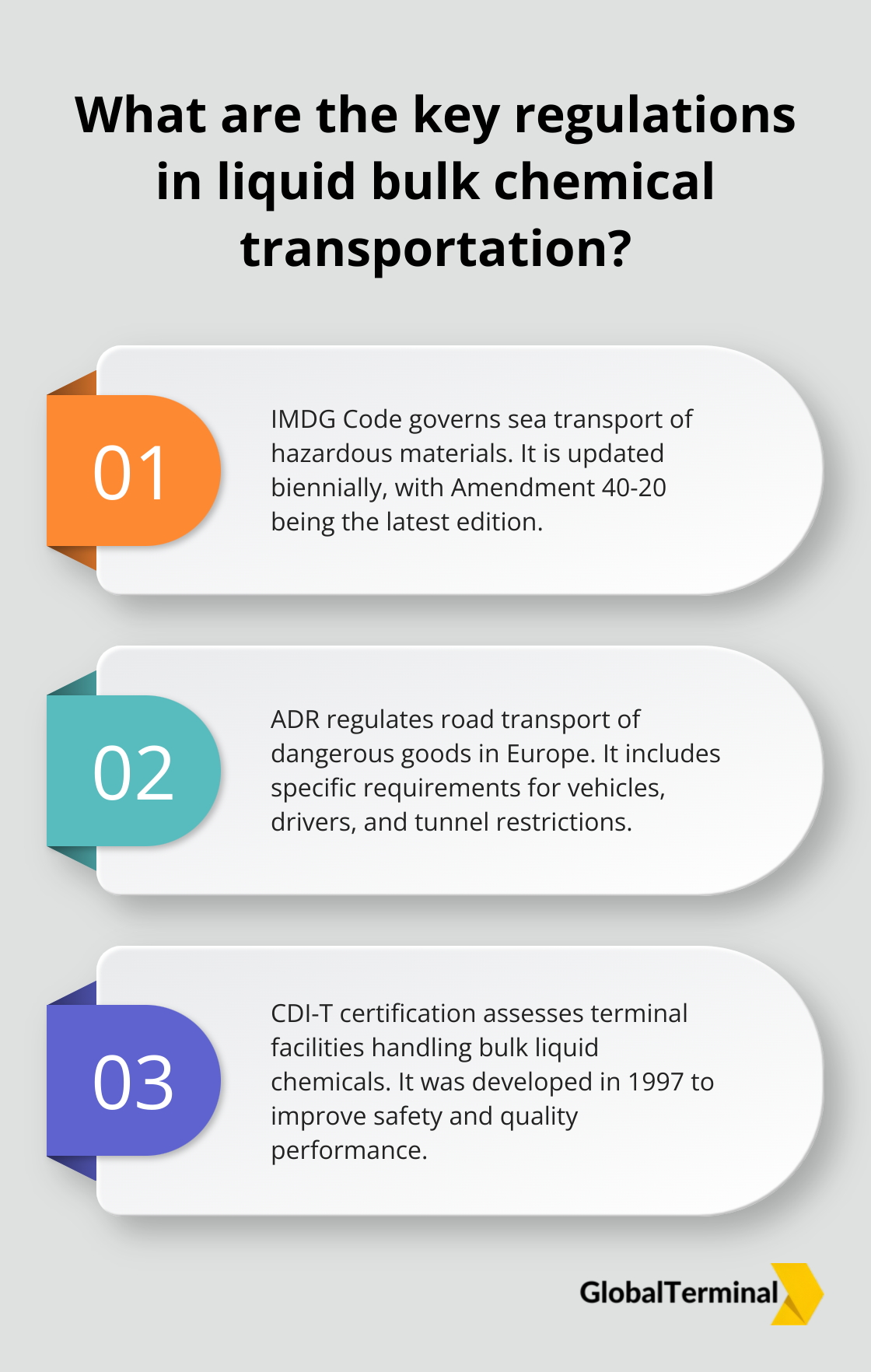
The Safety & Quality Assessment for Sustainability (SQAS) system, developed by the European Chemical Industry Council (Cefic), offers another layer of assurance. This system evaluates the quality, safety, security and environmental performance of logistics service providers and chemical distributors. Implementation of SQAS guidelines can lead to tangible improvements in operational efficiency and risk management.
Proactive Compliance Strategies
Companies should conduct regular internal audits to maintain compliance and drive continuous improvement. Ongoing training programs are essential to keep staff updated on regulatory changes and industry best practices. A proactive approach to regulatory compliance not only ensures adherence to legal requirements but also positions companies as industry leaders (particularly in terms of safety and reliability).
Leveraging Technology for Compliance
Modern technology plays a significant role in regulatory compliance. Advanced software systems can help track and manage complex regulatory requirements, ensuring that all operations adhere to the latest standards. Real-time monitoring and reporting tools (such as IoT sensors and blockchain-based systems) can provide accurate and timely data for compliance reporting, reducing the risk of violations and associated penalties.
Final Thoughts
Safety, efficiency, and compliance form the foundation of successful liquid bulk chemical transportation. Companies must prioritize rigorous safety protocols, optimize loading and unloading processes, and navigate complex regulatory landscapes. Continuous training and improvement drive operational excellence and foster a robust safety culture in this demanding industry.
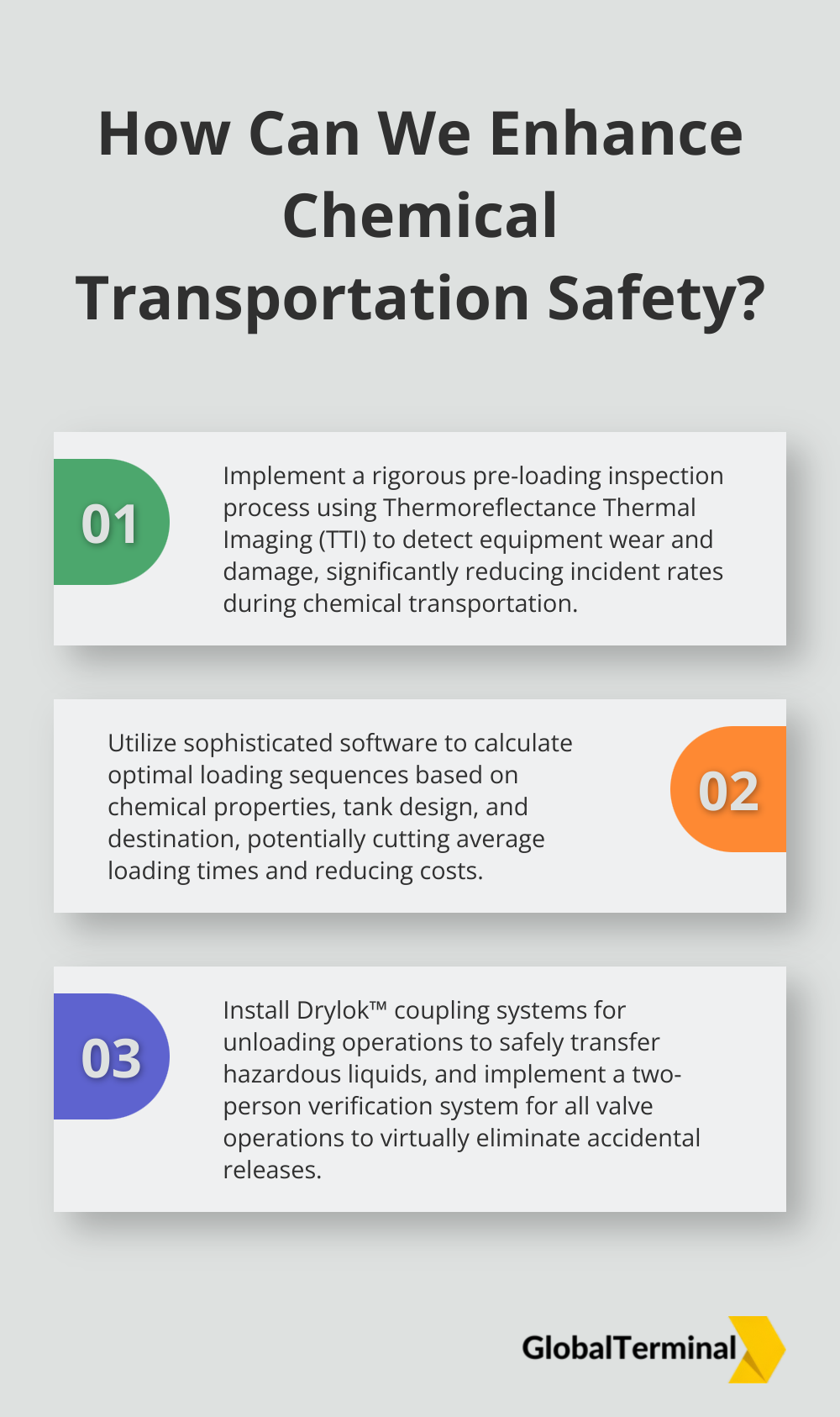
Technological advancements revolutionize liquid bulk chemical transportation. Real-time monitoring systems, IoT sensors, and advanced analytics enhance safety measures and operational efficiency. These innovations predict and prevent potential hazards while optimizing transportation processes, shaping the future of the industry.
At GLOBAL TERMINAL NETHERLANDS B.V, we strive to meet the evolving needs of the industry with our fuel storage and logistics solutions. Our facilities and safety protocols (designed for reliability and cost-effectiveness) provide optimal storage and transportation solutions for diverse operational needs. We invite you to explore how our services can support your liquid bulk chemical transportation requirements.


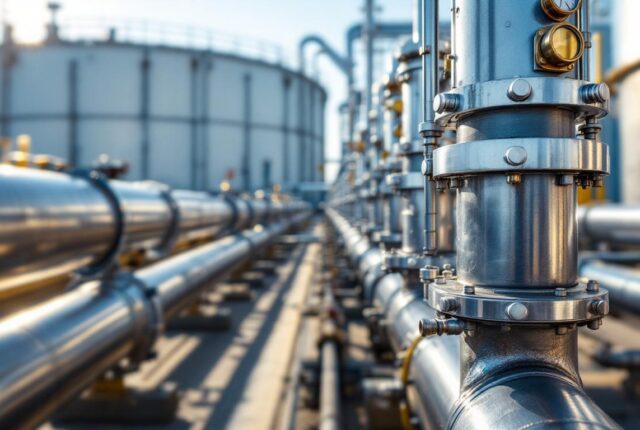
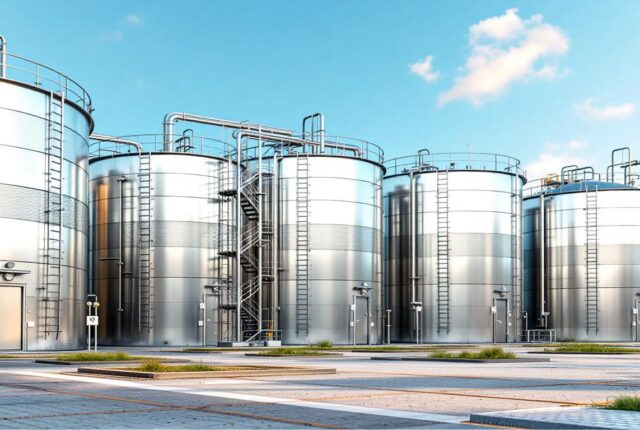

Leave a Reply